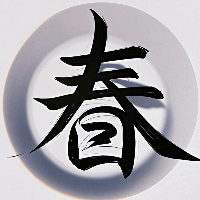我们知道,在单例的诸多实现里,枚举类实现的单例是最好的。在 spring boot 应用里,我们也可以使用枚举类来做单例,但是可能会遇到依赖注入的问题,这个问题呢,其实也不是问题,但肯定会困扰不少新手。本文就此展开,先讨论各种单例的优劣,再讨论 spring boot 里 枚举类的依赖注入。
1、最基础的单例,懒汉式,线程不安全,不推荐!!!
private static Test test;
private Test() {
}
public static Test getInstance() {
if (test == null) {
test = new Test();
}
return test;
}
上面的代码线程不安全,假设同时有多个线程进来,可能都执行到 test == null 这一行,发现是true,然后创建实例,最后每个线程获取到的实例可能不是一样的,即没有做到单例!
2、使用 synchronized 关键字的懒汉模式,既然上述代码线程不安全,那么,我们加个 synchronized 关键字,然后相关代码变为:
public static synchronized Test getInstance() {
if (test == null) {
test = new Test();
}
return test;
}
这种写法是解决了上述的并发问题,但是每个线程都是阻塞的,即这个函数同时只有一个线程可访问,这将多核变为了单核。。。
3、懒汉模式 + double check(双重检查),代码变为:
private volatile static Test test;
public static Test getInstance() {
if (test == null) {
synchronized(Test.class) {
if (test == null) {
test = new Test();
}
}
}
return test;
}
既然每次都给方法加锁很慢,那么,我们可以在该对象为空时才加锁,这样只在第一次创建时会有锁,以后就不用了,性能大幅提升!至于这里的 volatile 关键字,以后有空再说吧。
4、饿汉模式
实现单例,还可以这样:
private static final Test test = new Test();
public static Test getInstance() {
return test;
}
这种方式的缺点是没有懒加载,如果确定不需要懒加载,则可以使用这种方式。
5、匿名内部类
private static class TestHold {
private static final Test test = new Test();
}
public static Test getInstance() {
return TestHold.test;
}
这种方式和饿汉模式很像,不过使用了一个匿名内部类,保证不会在调用该类时立即初始化,而是懒加载。
6、枚举方式,这也是本人非常强力推荐的方式:
public enum Test {
INSTANCE;
public void doSomethings() {
}
}
那么,问题来了,在 spring boot 应用里,我们应该如何在 枚举类里做依赖注入呢?毕竟它只是个枚举类啊!其实完全可以如此这样!
public enum SurveyResultProvider {
COVID19(Constant.SurveyCodeKey.COVID19),
ONE_X(Constant.SurveyCodeKey.ONE_X);
private final String surveyCodeKey;
private SurveyResultHandler surveyResultHandler;
SurveyResultProvider(String surveyCodeKey) {
this.surveyCodeKey = surveyCodeKey;
}
public static SurveyResultHandler getSurveyResultHandler(String surveyCode) {
for (SurveyResultProvider handler : SurveyResultProvider.values()) {
if (surveyCode.equals(Configuration.getString(handler.surveyCodeKey))) {
return handler.surveyResultHandler;
}
}
return null;
}
@Component
public static class ServiceInjector {
public ServiceInjector(@Qualifier("onexResult") SurveyResultHandler oneXResultHandler,
@Qualifier("covid19Result") SurveyResultHandler surveyResultHandler) {
ONE_X.surveyResultHandler = oneXResultHandler;
COVID19.surveyResultHandler = surveyResultHandler;
}
}
}
唯一让人觉得遗憾的是,这样做将不再是懒加载了,不过也好,服务端追求的应该是稳定性,而非内存占用!

评论